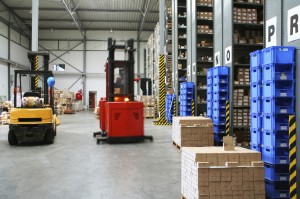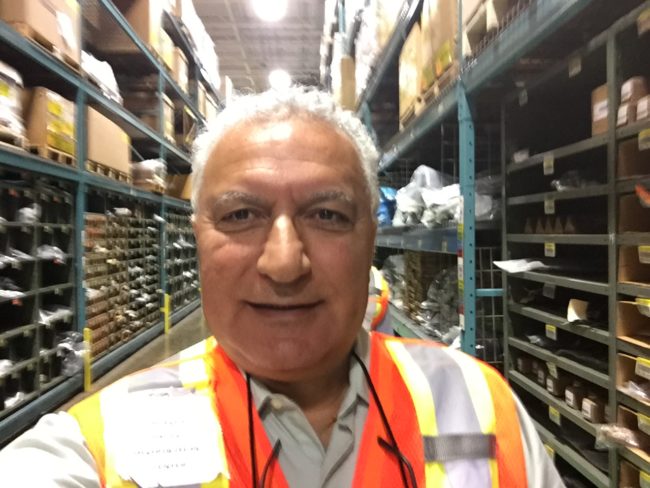- Seek an EWM resource that keeps only talking SAP’s best practices not the custom development
- Seek a resource that has vast knowledge/experience with Advanced Production Integration, Quality Inspection Engine (QIE), Delivery Types & Categories, Inventory Management and especially Transportation Management since it is becoming very popular recently.
- Ask for a preliminary Prototype solution before realization phase. This is a MUST
- Stay away replicating your current legacy system in the new EWM Solution. This is the one biggest mistake that causes plenty of custom development in EWM Solution unnecessarily
- Please keep in mind; SAP’s EWM module can handle 90% of any kind of the industry requirement as out of the box solution, so no need to think custom developing your solution
- Stay away deviating standard EWM functionalities
- Stay away custom developing Handheld RF Transactions – it’s the root cause of most majority of the failed EWM projects
- Use EWM RDS Solution (Rapid Deployment Solution) as your start-up guideline for your EWM project
- Validate SI’s fit/gap analysis with SAP North America or SAP AG before you get trapped with unnecessary custom developed EWM solution
Month: January 2017
Fixed Fee or Time & Materials – Which is the best model for your SAP project?
- by ayhanakkaya
Soon after selection of the implementation vendor, you will have to prepare a contract to engage with your SAP systems integrator. As such comes the tricky question ? Do you engage in a fixed fee contract or time and materials for the next phase or your entire project. The answer is not simpler either. My personal choice as always has been to go with a fixed fee engagement model but this may not always be possible depending on the type of SAP solution your company is implementing and some other factors that are discussed below. I will share my perspectives on both fixed fee and time & materials engagement model and at the end this should guide your project leadership in making a better decision. I have discussed points at a very high level and the actual decision will be based on your project specific circumstances.
SAP Fixed Fee Contract
In a fixed fee contract, you are asking your SAP implementation vendor to deliver particular phase or the entire SAP solution for a fixed price. Within the contract or SOW you should include the exact scope of the solution you need to implement. Any change or addition to this scope will have to be reviewed and processed by the change control committee of the project.This model may not suit every SAP customer and the following aspects need to be considered before making a proper decision.
- Clarity of Business Requirements: Your business teams should define the high level business requirements as clear as possible. While your project leadership is in the process of selection of the implementation vendor (SI) you should have the business teams to start discussing the business requirements and document these business requirements so that it can be included in the statement of work for the fixed fee engagement. Incomplete or lack of clarity on high level business requirements in your SOW can result in a poor quality or incomplete SAP solution.
- Packaged SAP Solution ?: Are you implementing an SAP solution or multiple modules that is more standardized ? This means that the standard SAP functionality aligns better with your business requirements with fewer RICEF especially enhancements or custom development. Since there are less uncertainties with SAP standard solution, fixed fee model should be favored.
Time & Materials Contract
In this model, you (the SAP customer) agree to pay the implementation vendor based upon the work that was done by the vendor resources on the project. This engagement is preferred when your project scope is not clear such that it can be included in the contract. Also, if you are doing sizeable custom development in SAP to meet your business needs there may be uncertainties to build a custom solution. It may be wise for the vendor and SAP customer to engage with a T&M contract. Word of caution: You should closely monitor the cost per resource and total effort spent of deliverables to keep to project costs from blowing thru the roof.Points to consider for going forward with a time and materials contract.
- Changing scope or lack of clarity: You are implementing future state SAP solution which sometimes may mean you want to change the way you handle certain business operations. If you are planning to change your business process and per say opt for best practices in future SAP solution, you may not be able to define the scope of work in exact terms. Also, your business teams may not be setup or did not have sufficient time to define clear high level business requirements. I recommend that you should opt for time and materials engagement terms for either of these two scenarios.
- Large RICEF or custom development: Your business may have additional business processes that are not addressed by SAP or you may need to do significant enhancement to processes in SAP. As such if you have large number of RICEF items or significant custom development in SAP there may be lot of uncertainties on cost, design and feasibility with these heavy custom built objects. SI may not be able to agree to fix the price of building these objects for a path that was never taken before. You should mutually consider a time and materials contract with measures in place to ensure that costs to implement such a project is within a reasonable margin. Always consider 10-15% contingency funds to cover these uncertainties
Efficiency in Warehouse
- by ayhanakkaya
The biggest measuring success factor in a warehouse is always the efficiency.
How can we achieve the highest efficiency, that is the question!
Here are a few criteria that I always emphasize:
- Inventory accuracy: inaccurate inventory always interrupt on-going warehouse processes and causes delays in shipments in timely manner and makes customer upset, lost customer causes revenue loss.
- Labeling (Storage bins, Product & HU label on boxing): You have to make sure you have the most efficient, readable, scannable and user-friendly labeling on each storage bins as well as on each product & HU Label on the boxes.
- Replenishment: Make sure Fixed Bins are always have enough stock for pickers. If not then use Order-Based Replenishment configuration.
- Use the most integrated and the most powerful functional warehouse management system like SAP EWM - Extended Warehouse Management.
- Avoid over-engineered custom developments in standard functionalities. I have seen many company's warehouse management system failed just because of over-engineered solution.
- Avoid extreme deviation-custom development of SAP EWM's RF transactions: This is also crucial because many companies create custom transactions that does not match SAP EWM's standard transaction, logical sequence and process flow, which can cause immediate failure.
- Each Manager/Supervisor should be able to perform each role as effective as possible assuming there is shortage in manpower. By doing this they can understand what is easy and what is not easy, what is efficient and what is not efficient in warehouse.
- Training: continuous training in warehouse environment is extremely important. One-page per process training is very efficient way of training people in warehouse, short and effective training is the keyword.
- Continuous improvement process: Get employees involved in business process improvement and assign them to write SOP for each processes. Always review as a team and make correction as needed.
- Cleaning: A clean and tidy warehouse motives everyone. Keep Bin Locations Clean and Organized. Clean and nicely organized warehouse bin locations mean employees can move around more quickly and get things such as counting and picking easier and faster.
- Take your time and perform the job only once: some managers think speeding processes increase the efficiency, but indeed it doesn't. If inbound pallet and packaging takes 10 minutes for a perfect job, make it happen. Don't move the unfinished packaging to another station and try to do packaging once again before put away process.
- Avoid distraction: Focus on organization, delegate work one at a time. Make sure each assigned task gets completed before start a new one.
- Safety first: Make sure you have proper safety rules and policies in the warehouse. Undesired accidents demotivate everyone. Make sure no visible jewelries are worn during shift hours. I have witnessed many accidents at work places.
- Charging stations: make sure forklift and RF device batteries are always full of charge. Make sure each equipment gets fair amount of turn in charging station and no machine could stop in the middle of the daily operation.
- Maintenance: Make sure all the equipment and devices get preventive maintenance in timely manner to avoid undesired interruption in the warehouse environment.
- Family takes the precedence: As a manager/supervisor make sure you pay attention to workers family requirement and assign enough space that they can take their time on important family issues. A motivated worker can make you the most successful or the most unsuccessful supervisor/manager in your business line.
SAP EWM Application Solution Architect: Who, What and Why do you need him in the SAP SCM EWM Projects?
For recent projects being formulated by SAP customers, I would come across the requirement for a SAP EWM Application Solution Architect or a SAP NetWeaver Architect or SAP Enterprise Architect to be a key member for these projects. As customers are stabilizing on their core SAP ERP / SAP ECC systems, they are now deploying more SAP solutions such as SAP EWM, TM, EM OER1 and integrating with their enterprise systems for these new initiatives. The complexity of the new solution architecture, technologies and SAP skills requires a SAP Application Solution Architect to validate the cross platform design and development approach. The SAP Architect (called by other titles such as SAP Solution Architect, SAP Enterprise Architect, SAP Technical Architect) is the expert to provide the integration approach and bring various development teams together on a common ground.
At ERP Consultant Inc., I’m providing SAP EWM Application Solution Architecture services to provide practical solutions using the existing IT investments of the SAP customer. A typical SAP customer would standardize on the SAP platform for core business operations, and an additional one such as extended warehouse management and/or logistics execution & warehouse management for custom applications. At ERP Consultant Inc., I guide my customers to provide a cost effective and a durable architecture which allows all IT platforms to evolve/upgrade without adversely affecting other connected SAP or non-SAP applications.
The SAP Architect would have the following profile:
- Multiple years of consulting experience across varied customers and industries
- Deep understanding of SAP ECC EWM products and competencies related to Inbound & Outbound Deliveries, Complex Process & Layout Oriented Storage Controls
- Usage of non-SAP products and technologies in the areas of ECC & EWM intgeration, such as: Advanced production Integration, Quality Inspection Engine integration
- Development experience BAPI’s, BAdI’s
- Deep understanding of the Mobile data Entry and Radio Frquency technologies, RF Framework
- Business understanding of the supply chain and logistics processes
- Project Benefits
The involvement of the SAP EWM Application Solution Architect would ensure the following:
- Correct solution architecture and usage of the various SAP tools
- Guidance on high level design on usage of SAP NetWeaver and integration with backend SAP and non-SAP systems
- Reduce project risk through accurate effort estimations and team skills
Need Help:
In case you need assistance on SAP EWM Solution Architecture, please contact me and send me your questions, comments or assistance request, and my team would be glad to assist you.



